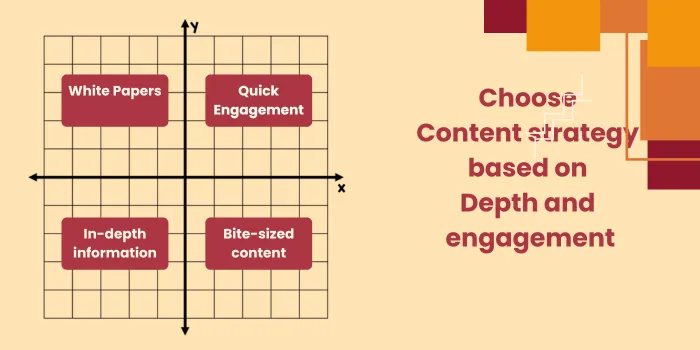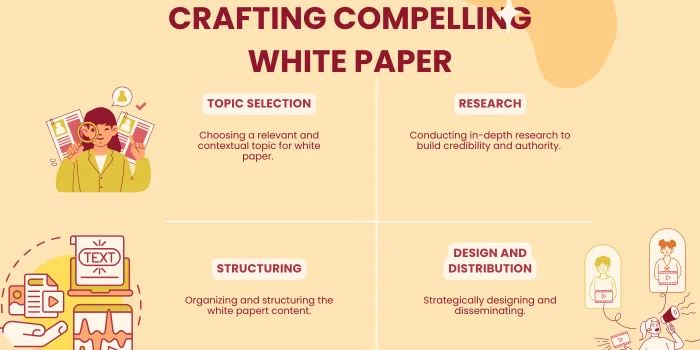

Ever wondered why some brands own the conversation in their industries while others fade into the noise? It’s not always about having the best product or the largest ad spend. Often, it’s about delivering compelling, data-backed narratives—and that’s where the white paper steps in.
A white paper is more than a document; it’s a strategic asset. It bridges the gap between expertise and influence, transforming raw data into actionable insights that shape industries.
Let’s face it: the business world thrives on credibility. But establishing that credibility in a sea of competitors? That’s the challenge. A well-crafted white paper cuts through the clutter with a laser-focused blend of research, storytelling, and strategic messaging. It’s the ultimate thought leadership tool, designed to position your brand as the expert in the room.
At their core, white papers are a hybrid between academic rigor and marketing finesse. Think of them as the intellectual heavyweights of content marketing. They serve two primary purposes:
This dual purpose makes white papers a cornerstone of B2B marketing, especially in industries like tech, finance, and healthcare, where decisions hinge on credibility and depth.
So, what separates a great white paper from an average one? The devil is in the technical details:
White papers follow a deliberate structure, often resembling a scientific thesis:
White papers avoid fluff and focus on precision:
If you’re wondering whether white papers still hold relevance in a world dominated by bite-sized content, consider this: decision-makers crave depth. While tweets may spark curiosity, white papers satisfy it. They provide the substance that informs multi-million-dollar decisions.

Here’s the kicker: a strong white paper doesn’t just sit on your website waiting to be downloaded. It’s a content powerhouse, fueling:
When crafted with care, a white paper becomes a long-term investment, driving lead generation, trust, and industry clout.
In this blog, we’ll unravel the layers of white paper creation—from selecting the right topic to measuring its ROI. Whether you’re a seasoned content strategist or a curious marketer, you’ll discover how to wield this tool effectively to shape not just your brand but the industry trends themselves.
So, grab your coffee, and let’s dig into the nitty-gritty of what makes white papers the unsung heroes of content marketing.
White papers are not just a tool for delivering content—they are a catalyst for change, steering conversations, influencing decisions, and even predicting future trajectories in an industry. Their power lies in their ability to combine rigorous research with a compelling narrative to present actionable insights. Let’s break down how they drive trends and leave a lasting impact.
White papers are often the bedrock upon which industry-wide reports are built. By synthesizing proprietary research, market data, and expert analysis, a white paper can become the go-to reference for stakeholders looking to understand emerging patterns. Think of them as the primary source material that gets cited in articles, referenced in boardrooms, and dissected in webinars.
White papers don’t just analyze current trends—they can forecast the future. By deeply understanding market dynamics and consumer behavior, they highlight gaps and opportunities that organizations can act upon. Businesses that create forward-looking white papers position themselves as thought leaders shaping the next big thing.
To create trend-driving content, leverage predictive analytics tools and surveys. For example, combining historical sales data with market forecasts can help identify patterns your competitors haven’t spotted yet.
Microsoft’s white paper on cloud technology adoption explored challenges in migrating legacy systems. The insights not only influenced CIOs to consider cloud-first strategies but also spurred competitors to address similar pain points. The result? The paper became a benchmark for the cloud computing industry.
Deloitte’s white papers exploring remote work trends during the pandemic became pivotal in defining how companies approached hybrid work models. These insights didn’t just reflect trends—they shaped them, prompting organizations to rethink policies and investments.
A great white paper isn’t born—it’s meticulously crafted. Each stage, from topic selection to distribution, demands precision. Here’s a step-by-step guide to creating a white paper that resonates with your audience and influences industry trends.

Alt text: Infographic for Crafting a Compelling White Paper
Your white paper must address a specific problem that your target audience faces. Use market research, surveys, and customer feedback to pinpoint challenges. For example, if your audience is struggling with supply chain disruptions, focus on actionable solutions tailored to that niche.
Consider Trend RelevanceA timely topic rooted in industry trends amplifies your white paper’s reach. Monitor news, attend conferences, and analyze competitor content to identify trending subjects. Tools like Google Trends or BuzzSumo can help gauge interest levels in your chosen topic.
The credibility of your white paper hinges on the quality of your research. Always verify the authenticity of data and provide proper citations. This step ensures your document is viewed as a trustworthy reference.
A white paper thrives on logical flow. Stick to a format that is easy to follow:
Incorporate visuals—charts, graphs, and infographics—to break up text and make complex data easier to digest. Visual aids increase retention and improve the overall reading experience.
Your design should strike a balance between aesthetics and usability. Use professional templates, high-quality images, and consistent branding to create a polished look. But don’t compromise on readability—opt for clean fonts and ample white space.
Optimize Distribution ChannelsYour white paper won’t deliver results if it isn’t seen. Promote it through:
With a well-structured, deeply researched white paper, you’re not just joining the conversation—you’re leading it.
Publishing a white paper is only the beginning. To maximize its value, you need to measure its performance, optimize its reach, and assess its influence on your brand’s goals. This section focuses on key performance indicators (KPIs), content repurposing strategies, and the long-term benefits of white papers.
The most immediate indicator of a white paper’s success is the number of downloads. However, a download count alone doesn’t tell the full story. Pair it with lead capture data to evaluate the quality of the audience:
Beyond downloads, it’s crucial to measure how your audience interacts with the white paper:
White papers are typically MOFU assets, so tracking conversions is key to gauging their impact. Measure:
A single white paper can be the fuel for a multi-channel marketing engine. Repurpose it into:
A well-researched white paper signals expertise and trustworthiness. Consistently producing high-quality white papers builds your brand’s reputation as a thought leader. Over time, you become the go-to source for insights in your industry.
Content as a Sales EnablerWhite papers are evergreen assets that enable your sales team to address client concerns. A sales rep armed with a white paper on industry trends can engage prospects more effectively by demonstrating your organization’s grasp of their challenges.
White papers are far more than just content—they are strategic assets that combine research, storytelling, and design to influence industry trends and position your business as a leader. From educating your audience to driving conversions, their impact spans the entire buyer’s journey.
But crafting a white paper isn’t a solo act—it requires expertise, precision, and strategy. Ready to create a white paper that sets your business apart? Let’s talk.
Don’t let your ideas remain untapped. Schedule your free consultation today with LexiConn | Content Marketing Agency in India. Discover how we can turn your insights into industry-defining white papers!
Visit us at www.lexiconn.in or drop us a line at [email protected].



I have read and accept the Privacy Policy
Read More